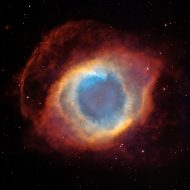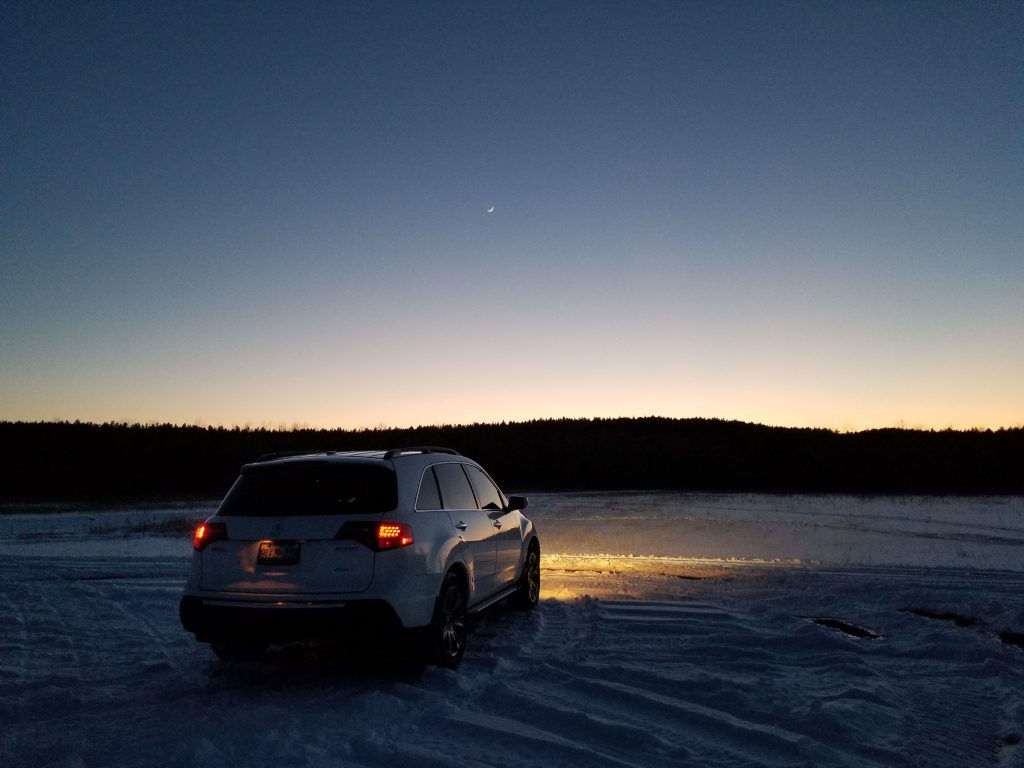I set out on a trip to a Bortle 2 sky to Nirvana, north of Bon Echo Provincial park. As usually, I packed everything in my MDX, and set out early evening around 4pm. The trip is close to a 3 hour drive, in addition I also need a time buffer to setup which takes typically 90 minutes.
Driving to past Bon Echo provincial park, the road turn very scenic, and my excitment is high. We are approaching one of the best astro sites in Southern Ontario. It lies evenly distant from light polluted urban metros of Toronto and Ottawa. Due to this, it is one of the most darkest, southern places you can visit.
My biggest scare was 3 minutes from the site. After leaving the highway and turning deep into a forest track leading to my destination, I noticed that the trail was heavily covered in snow. We are deep in wild territory, and obviously there is no snow cleaning here. Everything was fine until I got to the final stretch of the path. To get to the abandoned airfield, you must get up a steep hill. In the summer this is effortless, but on a snow covered road, deep in a forest with ravines on either side of the road, this turned out to be very hard. No matter how hard I tried to get up, I ended up spinning my tires, and forced to back up down the hill. It was getting dark and hard to see, and I began to panick. I had to get my car up there, since I needed to use my car’s battery to power the rig as a backup power source. Luckily, after 25 tries, I managed to get up the hill by turning off traction control. When I arrived at the top, I was rewarded with the following view:
All that was left was to setup. Even though it was cold, my excitment was keeping me warm. Ahead was a photo that I’ve been dreaming about a long time.
The Rosettte Nebula is a nebula that looks like a beautifull flower. It has strong Oiii signal in the center which makes it look colorful and dynamic.
In the end though, I struggled with my guiding. A combination of the objects location and average seeing conditions probably affected my ability to guide below my recommended RMS of 1.58″. My PHD graph was showing horrible RMS values – around 1.2 for DEC and 1.6 for RA. This prevented me from having pin point stars that in turn produce a sharp looking image.
Orion ED80 with x0.85 reducer and GSO focuser
Advanced VX mount
Nikon D5300 h-alpha modded
ST80 with QHY5L-II for phd guiding
Sharpcap polar alignment
12 dithered subs @ 200 iso x 480s = 1h 36min total
30 bias
30 flats
Imaged using BackyardNikon, Stacked in DSS, processing in Pixinsight.
Dynamic crop (just edges)
DBE
Background Neutralization
Color Calibration SCNR Green
Luminence mask
MLT noise reduction on background
Histrogram transformation
Mask with stars mask subtracted for:LocalHistogramEq
Histogram adjustment
MLT Chrominance
Color saturation adjustment
Curves adjustment
Morphological transformation for star reduction
Dark structure enhance
Last Updated on






